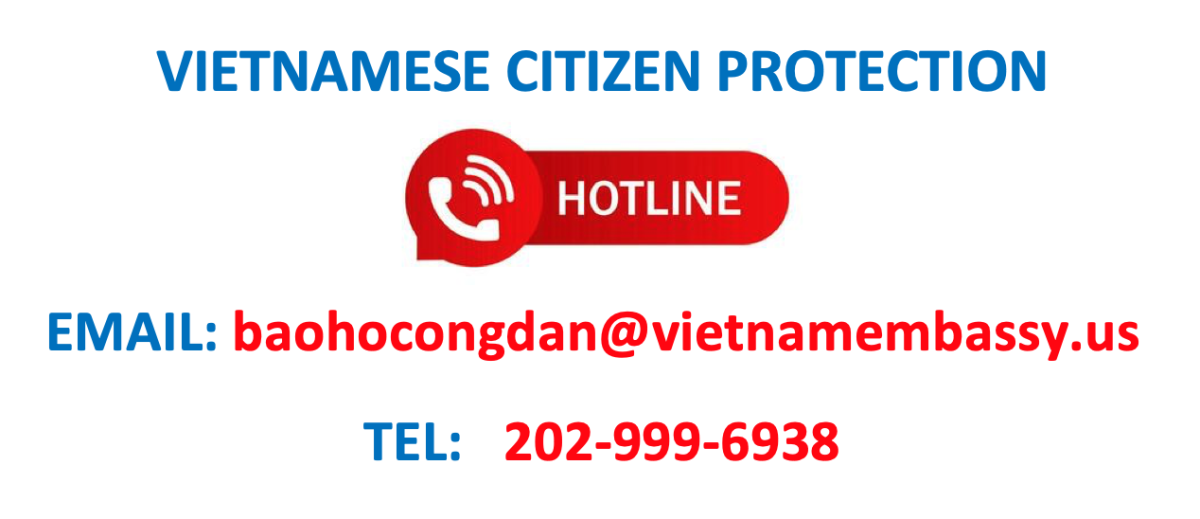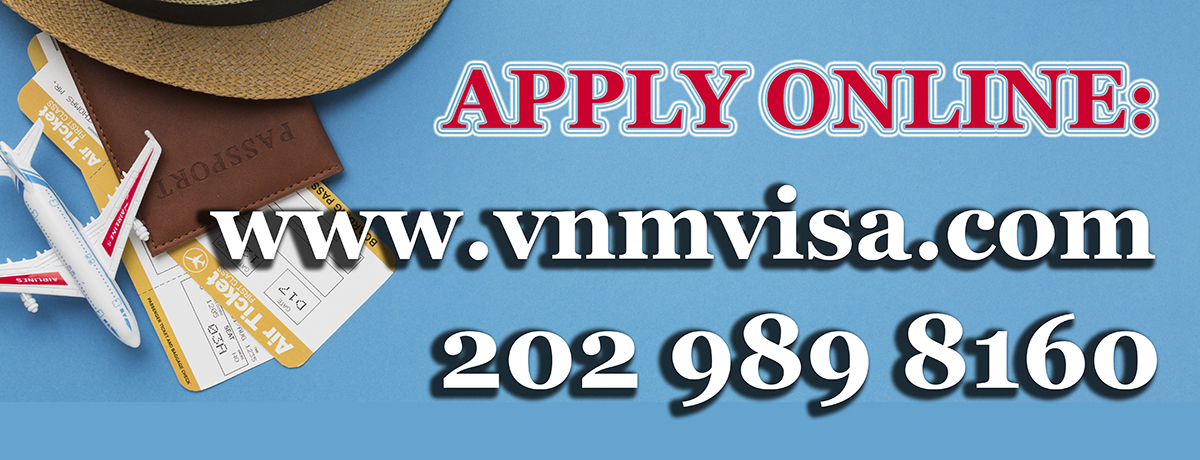Travel advice
Geographical Location: Viet Nam is located on the Indochina peninsula in Southeast Asia. It has a long land border of 4,550 km, bordering China to the North, Laos and Cambodia to the West, and Eastern Sea (South China Sea) of Pacific Ocean to the East. The country’s diverse topography consists of hills, mountains, deltas, coastline and continental shelf, reflecting topography formation in a monsoon, humid climate and strong weather exposure. The topography is lower from the Northwest to the Southeast. Three quarters of Viet Nam’s territory are made up of low mountains and hilly regions. One-fourth of the Vietnamese territory is covered by deltas. The country has a long coastline of 3,260 km running from Mong Cai in the North to Ha Tien in the Southwest. Viet Nam’s territorial waters in the Eastern Sea extend to the East and Southeast, including the continental shelf, islands and archipelagoes.
Climate: Viet Nam is located in the tropical zone. Its climate is characterized by high temperature and humidity all year round. The Northern part has more or less mainland climate. Viet Nam’s climate changes by seasons and by regions from the lowland to the highland, from North to South and from East to West. There are two major climate regions in Viet Nam: (1) Northern Viet Nam (from Hai Van Pass northwards) has a highly humid tropical monsoon climate with four distinguishable seasons (spring, summer, autumn and winter) and is influenced by the Northeast and Southeast monsoon. (2) Southern Viet Nam (from Hai Van Pass southwards) has a rather moderate tropical climate given the weak influence of monsoon and is characterized by dry and rainy seasons and warm weather all year round. The average temperature in Viet Nam varies between 21°C and 27°C and gradually increases from the North to the South. In the summer, the average temperature is 25°C (Hanoi 23°C, Hue 25°C, Ho Chi Minh City 26°C). In the winter, the temperature in the North reaches the lowest in December and January. In Northern mountainous regions like Sa Pa, Tam Dao and Hoang Lien Son, the temperature sometimes reaches 0°C with snow. The annual average rainfall stands between 1,500 mm and 2,000 mm. Air humidity is around 80%. Viet Nam is prone to natural disasters like typhoons, floods and droughts.
Population: With 94,569,072 people (as of 2016), Viet Nam ranks 14th among the most populous countries in the world. 30% live in urban areas and 70% in rural areas. People aged 15 to 60 account for 60% of the country’s population. Total work force in all economic sectors is around 45 million people. Ho Chi Minh City (7.1 million people) and Ha Noi (6.44 million people) are the most populous cities. Average life expectancy is 73.
Ethnicity: Viet Nam is a multi-ethnic country with 54 ethnic groups coexisting peacefully, among which Kinh people account for 86% of the population. The majority of the other 53 ethnic groups are scattered over mountainous areas and the midland, particularly ones in Northern and Northern Central region. Ethnic minorities have uneven development levels. All ethnic groups have their own unique cultures. Their beliefs and religions are also diverse.
Language: Vietnamese is the official language of Vietnam. Foreign language learning, particularly English, is popular among young people in Hanoi, Ho Chi Minh City, Hue, Da Nang and other cities. Tourist guides can speak English, French, Russian, Chinese and Japanese.
Hotel registration: Hotels in Vietnam and private hosts must register their guest’s presence with the police. You will be expected to hand over your passport, along with your visa number.
Currency Exchange in Vietnam: The official currency, the Vietnamese Dong, is non-convertible and is currently at about 22,000 (2018) VND to 1 USD . The US dollar is widely accepted among major shops and restaurants. Travelers checks can be cashed at authorized foreign exchange outlets and banks, and always require presentation of passport. Visa, Mastercard, Amex are accepted in some of the bigger hotels and restaurants. There are also a small number of international banks now operating in both Hanoi and Ho Chi Minh city. There are now many 24-hour ATM machines now all over Vietnam.
Vaccination: No vaccinations are required except for yellow fever if you are coming from an area where the disease is present. However, visitors should be inoculated against typhoid, cholera, hepatitis A & B, tetanus and polio.
Food: The cuisine of Vietnam is a pleasant surprise to many visitors and is definitely a part of the Vietnam experience not to be missed. One of the characteristics of Vietnamese food is that it is always fresh being bought the same morning straight from the market. Typical Vietnamese dishes you can expect to try include “pho”, a type of rice noodle soup eaten for breakfast; cha gio, deep-fried spring rolls; banh mi; and goi ngo sen, a delicious salad made with lotus stems, shrimp and peanuts. Due to the strong Buddhist influence in Vietnam, vegetarian food is widely available.
Electricity: Mainly 220V but in some areas 110V is also used.
Water supply: Tap water in urban areas in Vietnam is chlorinated, but it is recommended that it should be boiled before drinking.
Postal service: A regular international post service is available. In addition there are some new, special services: Express Mail Service (EMS). The domestic EMS ensures that letters and small parcels are delivered within 24-48 hours. International EMS has relations with nearly 30 countries world-wide, with a delivery time ranging from 2 to 10 days. Air mail and small parcels must however be subject to additional charges. Express money transfer is also available; money is delivered to the receiver within 24 hours.
Telecommunications: Cell phones are very popular in Viet Nam. Mobile internet, long-distance and international direct-dial calling are available throughout the country. Fax machines are quickly proliferating in Vietnam; public and registered fax machines are available in hotels, business and public offices. Internet access is available at most hotels and Internet cafes.
Television and Radio: Vietnam Television (VTV) broadcasts throughout the country and for overseas Vietnamese. International channels such as CNN are available in most hotels equiped with sattelite dishes or TV cables.
Public Holidays
January 1: New Year's Day
January / February: Tet or Vietnamese New Year. The actual dates vary from year to year according to the lunar calendar. Officially 3 days holiday but many businesses close down for a full week. This is the busiest time of the year for traveling in Vietnam and hotels, flights and trains are often full.
April 30: Victory Day
May 1: International Labour Day
September 2: National Day
Tourism seasons
Vietnam is a country where tourists can visit in all four seasons. The country's tourism service offers a range of programmes convenient to your circumstances. In the North, the best tourist season lasts from November to April the next year. Spring time is especially pleasant because of the cooler, drier climate. Also at this time there are a lot of ritual ceremonies and folk festivals of many diverse forms; such as: Festivals to commemorate national heroes and heroines, folk cultural festivals, spring festivals, as well as prayer ceremonies for good crops, to cite just a few. The most interesting one is the Lunar New Year Festival. Visiting Vietnam in that season, you are recommended to bring along warm clothes. The temperature in Winter is around 10-15 degree Celsius. It becomes warmer in March and April. Meanwhile in the South, the average temperature throughout the year is about 27 degree Celsius, so you just need thin garments, sun glasses and may be a hat or two.



